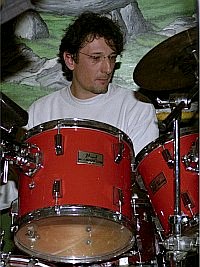A new class of materials formed by combining liquid crystals and metal clusters glow intensely red in the infra-red region of the electromagnetic spectrum when irradiated over a broad range of wavelengths. The materials, dubbed clustomesogens, could be used in analytical instrumentation and potentially in display technologies.
Liquid crystals are well known in display technologies from digital watches to flat panel televisions. As their name suggests, they are at once liquid and can flow, but their molecules can also be oriented into something akin to a crystal state, usually under the influence of an electric field.
A second class of materials of interest to the optoelectronics field is metal clusters. Clusters are aggregates of just a few atoms, and so their properties are not those of individual atoms nor of the bulk metal, but somewhere in between. Indeed, metal clusters show some rather unusual electronic, magnetic, and optical properties because of the presence of the particular types of bonds that form between metals when just a few are present.
Now, Yann Molard, of the University of Rennes, in France, and colleagues there and at the University of Bucharest have united the two classes in clustomesogens to create metal clusters that exist in a liquid-crystalline phase.
Liquid crystals containing bonds between metal atoms are rare and usually limited to compounds in which just two metal atoms are connected in each unit. Molard and colleagues have produced liquid crystals that contains octahedral clusters made of six molybdenum atoms. Eight bromide ions sit on the eight surfaces of the octahedron, six fluorides and an aromatic organic group, or ligand, is at each vertex of the octahedron. These aromatic ligands each have three long hydrocarbon chains also ending in a pair of aromatic rings.

Simple warming these materials initiates a process of self-organization in which the clusters stretch out to form long, narrow units arranged in what is known as a lamellar, plate-like, structure. The flat rings at the ends of the ligands of neighbouring layers are interleaved and the structure has liquid-crystalline properties.
“The association of mesomorphism with the peculiar properties of metallic clusters should lead to clustomesogens that offer great potential in the design of new electricity-to-light energy conversion systems, optically based sensors, and displays,” the team says.
Links
Angew Chem Int Edn, 2010, 49, 3351-3355
Yann Molard homepage